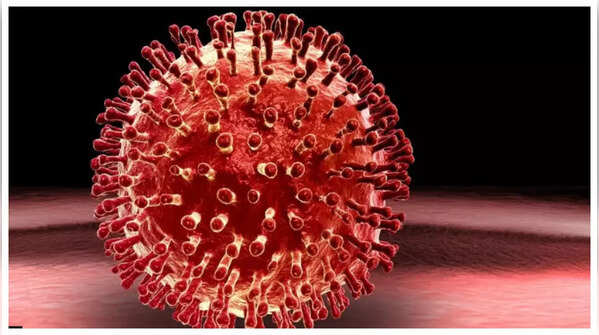- News
- lifestyle
- health-fitness
- health-news
- These deadliest viruses have the lowest survival rate!
These deadliest viruses have the lowest survival rate!

These deadliest viruses have the lowest survival rate!
Unknown to us, there are millions of viruses wafting through the air as we breathe. Most of these viruses are mild in nature, causing nothing more than the common cold and cough, stomach flu and others, that most of us recover from in a week or so. However, some of these viruses could be deadly in nature, and can even be fatal for humans. And if you thought Covid was bad, here is a list of some other viruses with the lowest surviving rates (however, most of these diseases fall in the rare category, so nothing much to worry)

Ebola Virus
Ebola is one of the most deadly viruses in the world. It causes Ebola Virus Disease (EVD), which leads to severe bleeding, organ failure, and often death. The virus spreads through direct contact with blood or body fluids of infected people or animals. The survival rate of Ebola varies depending on the outbreak, but it can be as low as 25% to 50%. This means that up to half of the people who get infected may die. The virus was first discovered in 1976 near the Ebola River in Africa and has caused several outbreaks since then.

Rabies Virus
Rabies is a virus that affects the brain and is almost always fatal once symptoms appear (not straight after the bite). It is usually spread through the bite of an infected animal, such as dogs, bats, or raccoons. The virus attacks the nervous system and causes symptoms like fever, confusion, and paralysis. However, if a person receives a vaccine soon after being bitten, there is 100% protection. Even though Rabies kills tens of thousands of people worldwide every year, mostly in Asia and Africa, there has not been even a single instance of death by rabies after receiving the vaccine on time.

Hantavirus
Hantavirus is a rare, but deadly virus spread by rodents, especially mice. People get infected by breathing in dust contaminated with rodent urine or droppings. The virus causes Hantavirus Pulmonary Syndrome (HPS), which leads to severe lung problems and can cause death. The survival rate for HPS is around 38%, meaning more than half of the infected people may die. There is no specific cure for hantavirus, so early medical care is imperative.

Marburg Virus
Marburg virus is similar to Ebola and causes Marburg Virus Disease, a severe hemorrhagic fever. It spreads through contact with infected body fluids and has a very high death rate, ranging from 24% to 88%. The virus was first identified in 1967 during outbreaks in Germany and Yugoslavia, linked to monkeys imported from Africa. Like Ebola, Marburg virus causes bleeding, fever, and organ failure.

Lassa Fever Virus
Lassa fever is caused by a virus found mainly in West Africa. It spreads through contact with urine or droppings of infected rats or through human-to-human contact. The disease causes fever, weakness, and bleeding. The survival rate varies, but about 1 in 5 people who get very sick may die. Lassa fever is a serious health problem in some African countries, especially during the dry season.

What makes these viruses so deadly?
These viruses are deadly because they attack our key organs like the brain, lungs, and blood vessels, which makes recovery either extremely difficult, or impossible. They often cause severe bleeding and organ failure. Another reason is that many of these viruses spread quickly through contact with infected people or animals. In some cases, there are no effective treatments or vaccines available, making it hard to save lives.








